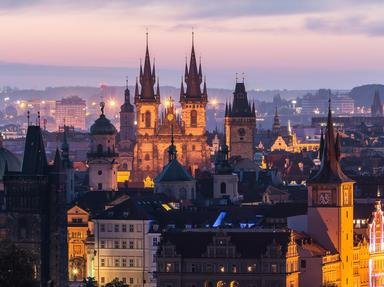Quiz Answer Key and Fun Facts
1. Four countries border the Czech Republic: Poland; Germany; Slovakia and which is the fourth one?
2. A Velvet Divorce split up the former Czechoslovakia in two independent countries: Slovakia and the Czech Republic. When did this happen?
3. What was the estimated population of the Czech Republic at the time of the split of Czechoslovakia?
4. Vaclav Havel, the last President of Czechoslovakia and the first President of the Czech Republic was, also, very well known in another field. What was he?
5. Which of these four cities is NOT located in the Czech Republic?
6. In what year did Warsaw Pact troops invade Prague, to end the people's protest against the Soviet influence in Czechoslovakia?
7. When do the Czechs celebrate National Liberation Day?
8. This medieval pedestrian bridge, adorned with statues of saints, spans over the Vltava river in Prague, between the Prague Castle and the Old Town. What is its name?
9. When did the Czech Republic join the European Union?
10. Czech composer Bedrich Smetana composed a set of six symphonic poems named "Ma Vlast." What is the English translation of "Ma Vlast"?
Source: Author
tiye
This quiz was reviewed by FunTrivia editor
agony before going online.
Any errors found in FunTrivia content are routinely corrected through our feedback system.
